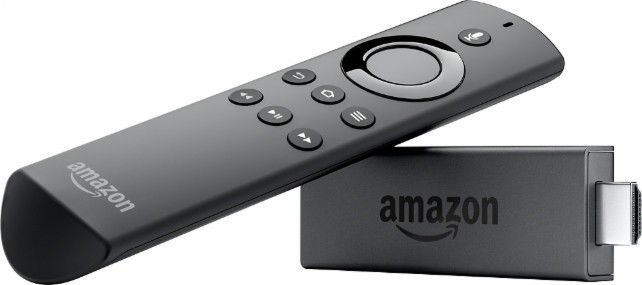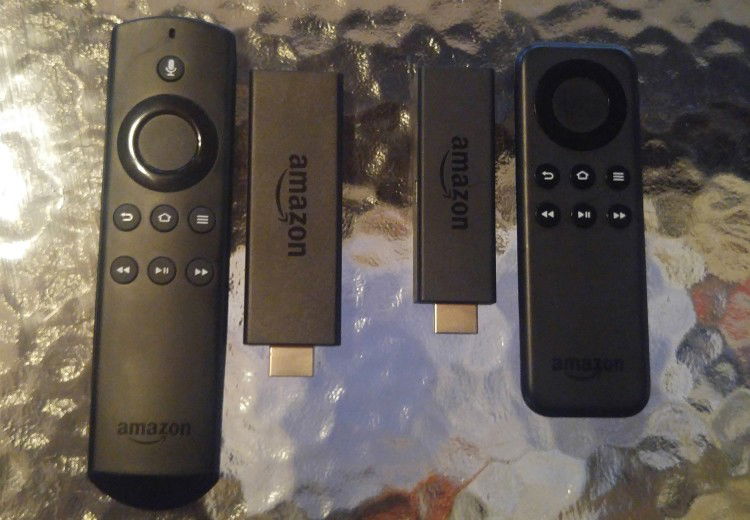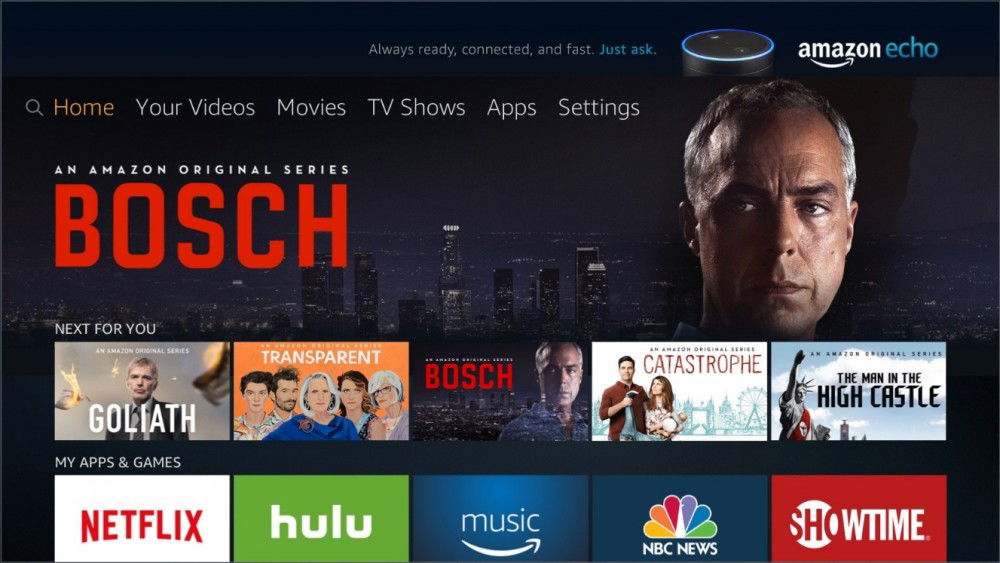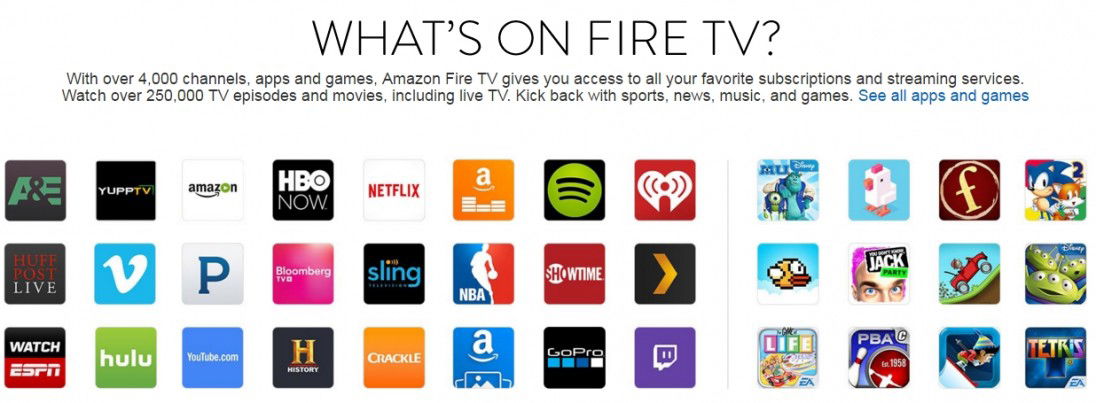Back in 2014, Amazon stepped into the world of cord-cutting and released two products that set out to compete against the Apple TV and multiple Roku devices. Those products were the Amazon Fire TV and the Fire TV Stick. While the Fire TV was well received and went on to get a revision during 2015 (see our review here), the Fire TV stick wasn’t quite as popular due to the lack of storage and wired connectivity and a much slower CPU. The last part was increasing apparent as users attempted to use the device with apps such as Netflix and Sony’s PlayStation Vue. The performance was simply subpar as the Fire TV stick just wasn’t able to keep up, which caused potential buys to opt for the more expensive Fire TV or their competitors.
Two years later, however, Amazon has released an updated version of the Fire Stick 2 – but is it more of the same or is it time that the Fire TV Stick grew up?
Name: Amazon Fire TV Stick 2
Manufacturer: Amazon
Price: $39.99
Release Date: 10/20/2016
I’ve been a member of the cord-cutting community for a while now, even before the Amazon Fire TV products were a thing and I had already purchased multiple Western Digital Live TV devices for each of my rooms in my home. Once Amazon released the Fire TV Stick, I promptly switched them out with a Fire TV in my man cave, with the Fire TV Sticks in the kids and my bedroom. While the Fire TV was almost perfect, the Sticks, on the other hand, were sort of disappointing. They got the job done, but at a slower pace. By then, however, I was already invested in the ecosystem and had been a member of the Amazon Prime service, so using the Fire TV’s was a bonus. Launching applications on the Fire TV Stick was easier slower compared to the set top box, at times by 5-10 seconds and longer if I started up PlayStation Vue, Netflix or even Plex (which was used to stream my own content in my home). There were times where I was tempted to remove the Sticks and go back to cable, but calmer heads prevailed.
Eventually, I caught the wind that Amazon was working on an upgrade of the Fire TV Stick, with an improved CPU (Quad-core ARM 1.3 GHz), GPU (Mali-450 MP4), and many other enhancements. With that coming in the few months, I held fast. I was hoping that the revision would be an upgrade or I’d be paying up to $100 for 3 more Amazon Fire TV set-top boxes. Once October 20th, 2016, came around, I headed up to my local Bestbuy and picked up the new Fire TV Stick 2. All the while I was wondering if this would be any better than the first go around.Well, I was about to find out, wasn’t I?
Thankfully after some initial testing with the device for 4 days, I can safely say that this new version is leaps and bounds better than the original. The first you notice is that the 2016 variant is a tad longer and wider than the original. It also includes an updated Fire TV remote that supports Alexa, so you can say good-bye to the original and less attractive remote. This also means that you can just sit back on your couch, bed or favorite chair while you bark commands at the device, such as playing music, movies or even ordering food. It also doubles as broadcasting the morning news, checking weather other various tasks you usually do as you stumble out of bed while getting ready for work. It’s worth nothing that Alexa doesn’t fully support all functions and out of several commands, several were answered by an “I can’t do this or this isn’t supported. This isn’t unexpected as Amazon purposely gimped Alexa on the Fire TV lines, while the Amazon Dot and Echo have fully functional versions of the service.

Compared to the original Stick, this new guy is much faster ,yet still not as fast or powerful as the 2015 Fire TV set-top box. Launching applications such as Plex and Netflix were faster as well, while PlayStation Vue was just as fast as the Fire TV box that I’m currently using in my Office and Living Room, with one slight difference – It’s just a little slower when you’re searching through channels. While we’re on the subject of PlayStation Vue, I did notice some improvement on starting the app, as well as when going to the DVR functionality. Testing both the Fire Stick 1 and Fire Stick 2, side by side, it was easy to see the differences in speed here. Loading a new channel or moving thru the menus was nearly lag free, compared to the 1-2 seconds that was observed on the older Fire TV Stick.
Though to be fair, we are comparing a device that’s running on a CAT 5E wired connection (1GB), compared to a wireless connection that’s hitting the same device as 10 other wireless devices. So I really couldn’t fault that, as the speed difference was already apparent. Speaking of the wireless connectivity, the Fire TV Stick 2 not only supports 802.11 b/g/n but now 802.11 ac. I wasn’t able to test that doing this review as I simply haven’t upgraded the home to AC, as I’m using wired just about everywhere. Bluetooth 4.1 was also added and I was easily able to connect a multitude of Bluetooth devices, such as wireless headphones and speakers. I still was not able to pair my DualShock 4 to the device, while my Amazon Fire controller paired with no issues. This plagued the original Fire Stick as well, so looks like more of the same here.
The device is still lacking storage, with only 5GB of the provided 8GB was available as usage storage, which is understandable as this is meant to be a portable solution. Thankfully,while most Amazon applications are pretty small and you won’t see any issues, the Fire TV Stick 2 does support expandable storage using USB storage. For that matter, it supports, surprisingly, most USB devices with the use of a USB hub or Y-cable. Out of the box, the Fire TV Stick is running Amazon’s Fire OS 5.2.2.0. There is also the little issue of Amazon removing the ability to calibrate your TV screen. On the Fire TV Stick and set -top box, you had the ability to adjust the display area in the calibration. This is gone with the Fire TV Stick 2, the option is still there but the functionally isn’t. Going to the calibration simply leaves you with a static image, gone is the ability to use the up and down arrows to adjust the display. You’ll have to depend on your TV to do this now, yet we’re hoping that Amazon ends up putting this feature back in.
Another nice feature of the updated Fire Stick 2 is the inclusion of HDMI-CEC. What this does is allow the Fire TV Stick to wake up and automatically switch from whatever HDMI signal is being used on the TV/monitor it is connected to. Meaning if you’re watching the cable box or a gaming console and want to switch to the Fire Stick 2, you just have to press a button on the remote and it will switch over for you. I tested this one 4 different TV/monitors in the house and it worked on 2 of those, while the other 2 apparently had another HDMI-CEC enabled device on it, which caused it to jump to the wrong signal occasionally. Once I removed them, it worked just fine. I actually stumbled on this little feature by accident while I was playing a game and my son picked up the remote and started pressing buttons.
One of the big draws of the 2015 Fire TV set-top box was the ability to display a 4K signal – you won’t find that there, however. The Fire Stick 2 only supports a 1080p signal. However, there were times where the quality wasn’t up to par. I observed this during several Youtube videos and watching Twitch. That said, that Youtube application isn’t an official one and not every video was like that. This also held true for Twitch, as the quality differed depending who’s channel I watched. For normal media consumption, the average consumer likely won’t see any issues during playback, as Netflix, Hulu, and even Amazon’s own videos looked great. Those who have an eye for HD content may have some slight differences on that front, though it remains to be seen. Both H.264 (8-bit) and H.265 (10-bit) codecs are supported, with the latter providing better compression with less quality loss. Sadly, the device still only is able to output at 30FPS, which is definitely something to think about if that’s important to you.
Nothing has changed in the audio department, to which the Fire TV Stick supports AAC-LC, AACv1 and AACv2, AC3 and eAC3, as well as MP3, MIDI, PCM, Vorbis and FLAC playback. In a nutshell, this merely means that this device is capable of handling just about every audio signal sent to it. Hook this up to a nice soundbar or audio receiver you’ll be able to stream your favorite jams in style.

All in all, the updated Fire Stick 2 has impressed me on just about every point – It’s improved that much in every area, but one – the UI. This is the same UI that can be found on both the original Fire TV Stick and both Fire TV Boxes and it’s a bit dated in how it functions. While this is an Amazon-branded and development device, I’m still a bit crossed on how Amazon is directing you towards their own media at every turn. Sure, the UI isn’t that bad, however, there’s one feature that I had been asking about for some time and that’s locking applications into place. If you use an app over and over, then it stays put. If you start using others, they tend to push that one app out of place, forcing you to go back to the application drawer to access it again. It’s gone from a minor annoyance to a major one, especially since my children tend to never favor the same applications as I do.
Thankfully it seems that Amazon is away of this, and have announced a few days ago that a new UI is coming to all Amazon Fire TV devices. There’s no word on if it addresses my annoyance, but it does at least provide a slicker UI look.

Summary
Compared to the original Fire TV Stick, this updated model is definitely an improvement over the original. Thanks to the upgrades to both the CPU and GPU, this Fire TV Stick 2 is snappier and more responsive. The inclusion of Alexa is trivial but it does serve a purpose, just don’t expect to sample the full blown version of the feature as that’s reserved for the Amazon Echo and Dot. For those vested in the Amazon ecosystem and aren’t 100% sure of the Amazon Fire TV is for you, then the Fire TV Stick 2 is a recommended jumping in point.
Pros:
+ Upgraded remote controller
+ Alexa addition improves user interaction
+ Definitely more responsive
Cons:
– Onboard storage is still restrictive
– The user interface is in need of an update
– Requires an Amazon Prime membership to take full advantage of it
-
A worthy upgrade over the original model


